

— Blogs —
—Products—
 Consumer hotline +8618073152920
Consumer hotline +8618073152920 WhatsApp:+8615367865107
Address:Room 102, District D, Houhu Industrial Park, Yuelu District, Changsha City, Hunan Province, China
Product knowledge
Time:2024-11-10 16:48:13 Popularity:1577
An automatic irrigation system is a system that utilizes advanced control technology and sensors to manage and distribute water in a way that allows for automatic irrigation without human intervention. This type of system is commonly used in agriculture, landscaping, golf courses, stadiums, and other situations that require regular irrigation. Below are the main components and features of an automatic irrigation system:
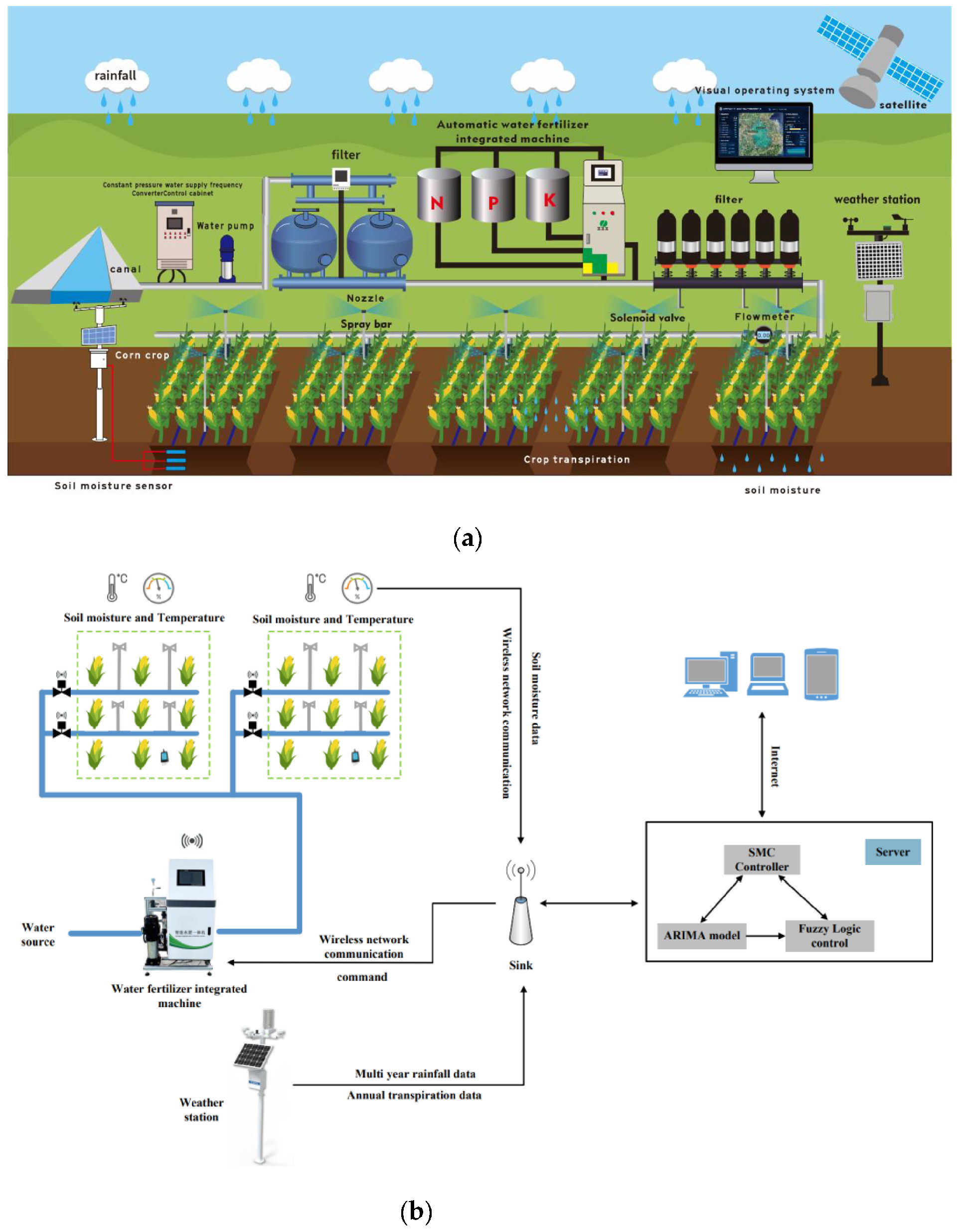
- Soil Moisture Sensor: used to monitor the moisture content in the soil.
- Rainfall Sensor: Used to monitor the amount of rainfall.
- Temperature Sensor: For monitoring the air temperature.
- Wind speed and direction sensor: for monitoring wind speed and direction.
- Light sensor: for monitoring light intensity.
- EC conductivity sensor: for monitoring the conductivity of the soil solution, reflecting the soil salt content.
- Liquid level transmitters: for monitoring the level of a pool or tank.
- Pressure sensor: to monitor the water pressure in the irrigation system.
- Soil pH sensor: sensor to measure soil acidity and alkalinity

|

|

|
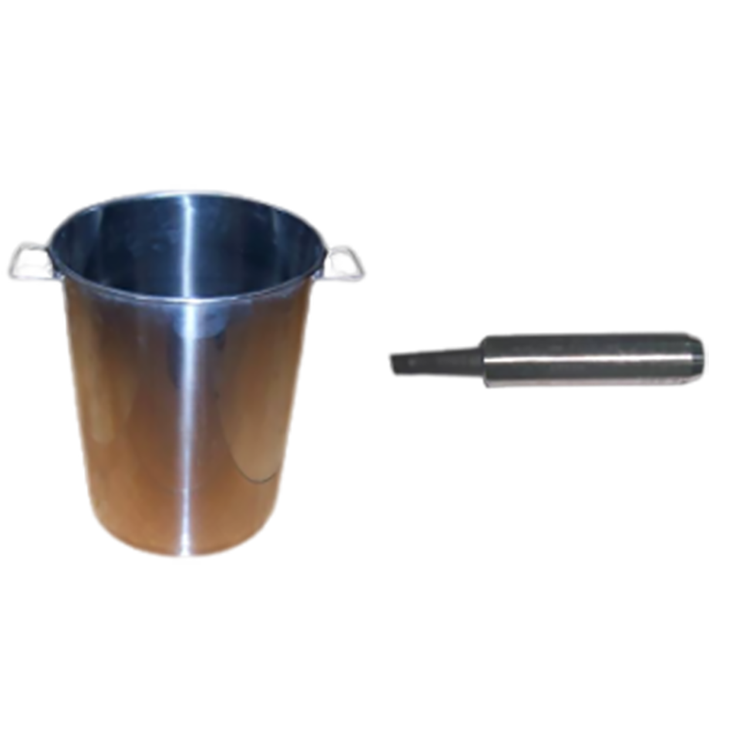
|
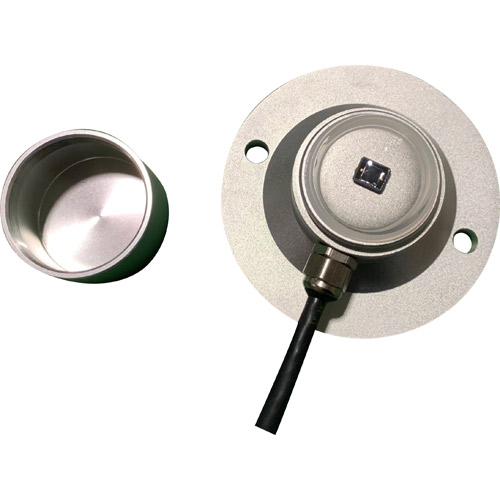
|
| Anemometer Wind Speed sensor | Wind direction sensor | Tipping bucket rain gauge sensor | Evaporation sensor | Sunshine Duration Sensor |

|

|

|
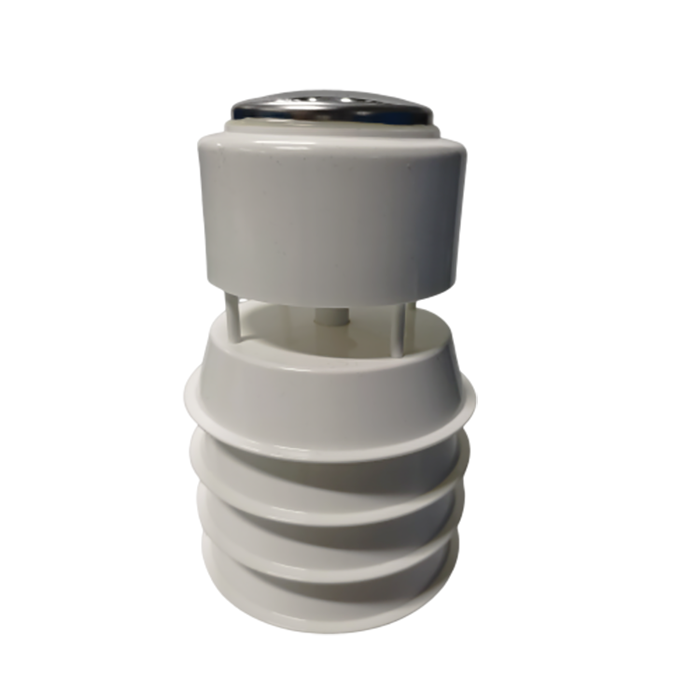
|
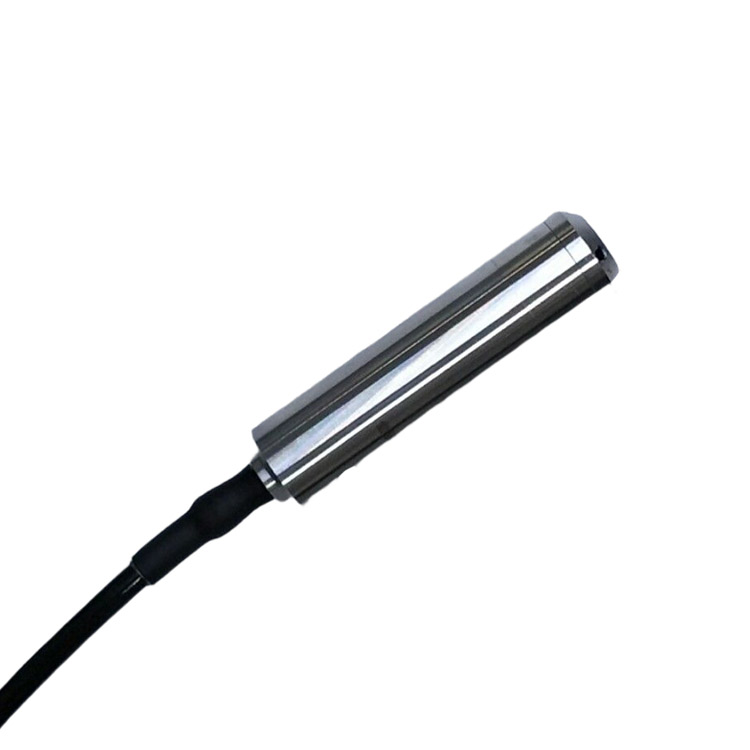
|
| Atmospheric Temperature Humidity air pressure Sensor | ultrasonic wind speed and direction sensor | 5 in1 Ultrasonic Weather Station Sensor | 7 in1 Ultrasonic Weather Station Sensor | Water level sensor |
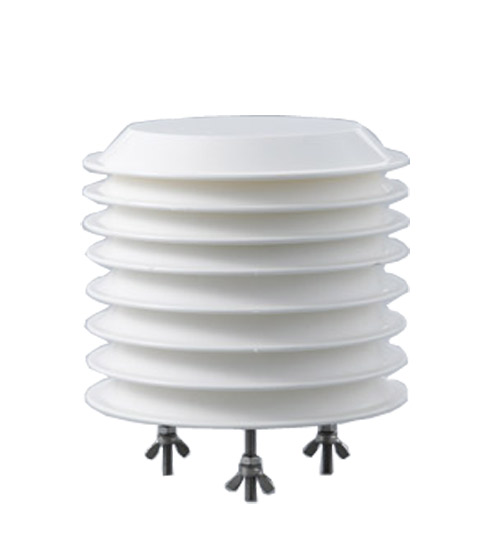
|
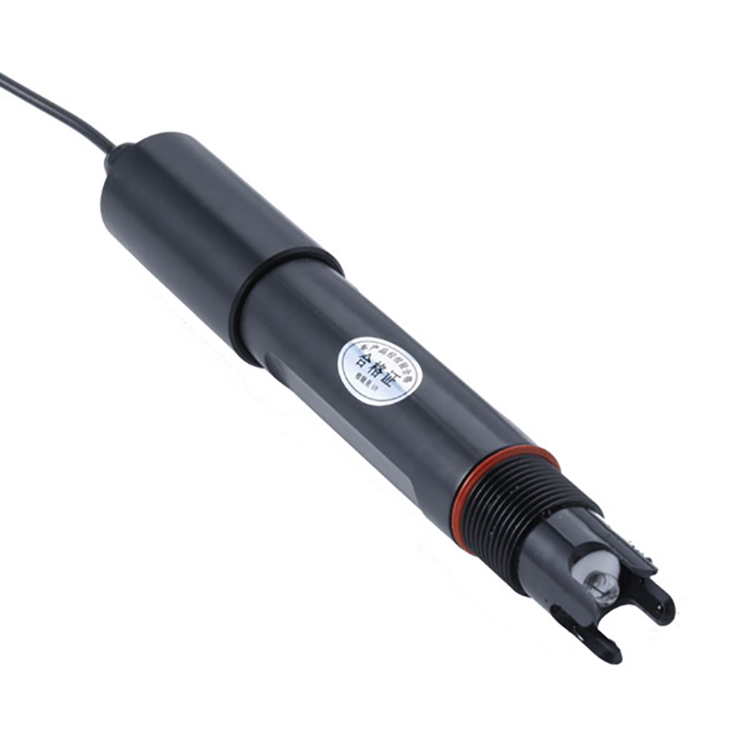
|
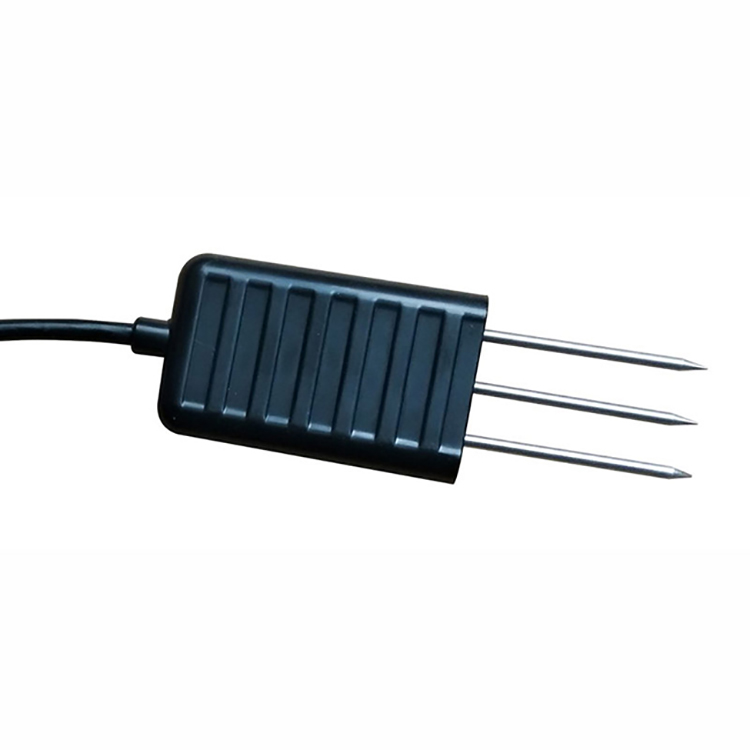
|

|

|
| Carbon dioxide sensor(CO2 sensor) | Soil pH sensor | 3-in-1 Soil Temperature Humidity EC Sensor | illumination sensor | Soil Moisture Temperature sensor |
- Is the “brain” of the system, responsible for receiving sensor data, according to the preset program and logic to control the irrigation operation.
- Usually includes a central processor, memory and input/output interfaces.
- Valve: used to control the switch of water flow.
- Water pump: used to transport water.
- Sprinkler: for spraying water.
- Drip irrigation pipe: used for drip irrigation.
- Connecting sensors, control units and actuators, which can be wired or wireless.
- Common wireless technologies include 4G, 5G, Zigbee, LoRa, Wi-Fi, etc.
- Allows users to set up irrigation schedules, view system status, adjust parameters, etc.
- This can be a local touch screen interface or a remote cell phone application.
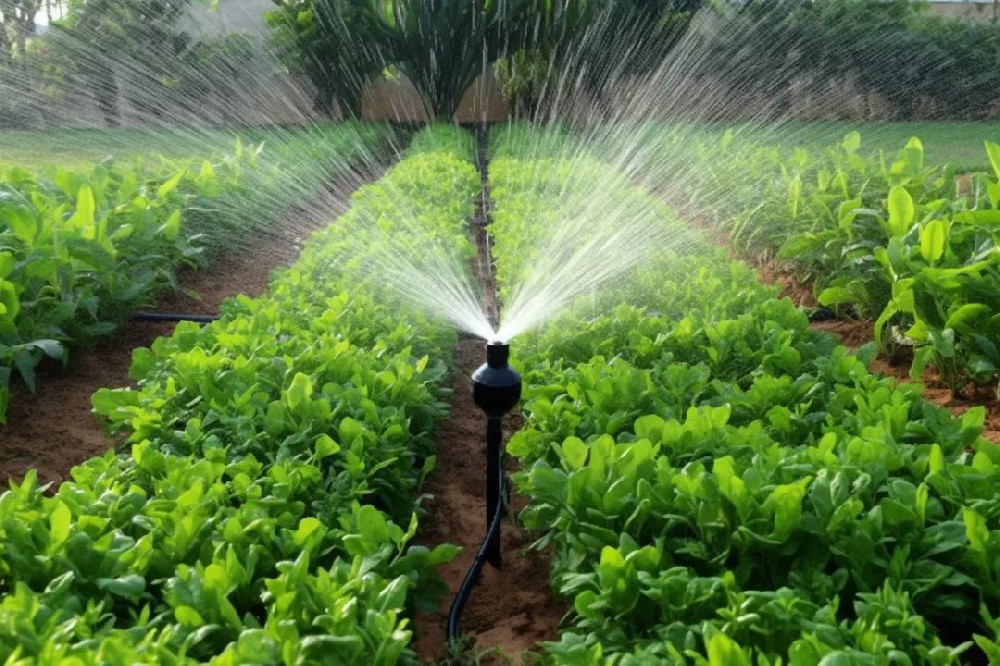
1. Automation: The system can automatically start or stop irrigation according to soil and environmental conditions.
2. Accuracy: Precise monitoring by sensors ensures that crops receive the right amount of water and avoids over- or under-irrigation.
3. Resource Conservation: Reduces water waste and improves water use efficiency.
4. Flexibility: Different irrigation schedules can be set up for different crops and soil types.
5. Convenience: Users can manage irrigation through remote control or preset programs, reducing manual labor.
6. Scalability: the system can usually be easily expanded to accommodate irrigation needs for larger areas.
1. Monitoring phase:
- The sensor continuously monitors environmental factors such as soil moisture, rainfall, air temperature, wind speed, and light.
- When the soil moisture falls below the set threshold, the sensor sends the information to the control unit.
2. Decision-making phase:
- The control unit analyzes the sensor data and combines it with other factors (e.g., weather forecast, crop water requirement, etc.) to make a decision on whether to irrigate or not.
- If irrigation is required, the system calculates the amount of irrigation needed.
3. Execution phase:
- The control unit sends a start signal to the irrigation equipment.
- Irrigation equipment (e.g., sprinkler heads, drip irrigation pipes, pumps, etc.) starts working and irrigates according to the preset irrigation schedule.
4. Feedback adjustment phase:
- During the irrigation process, the sensor continues to monitor the soil moisture and feeds the data back to the control unit in real time.
- The control unit adjusts the working status of the irrigation equipment according to the feedback to ensure that the irrigation is uniform and not excessive.
5. Record and optimization phase:
- After the completion of irrigation, the system records the relevant data of this irrigation.
- By analyzing these data, the irrigation strategy can be optimized to achieve more efficient and save water.
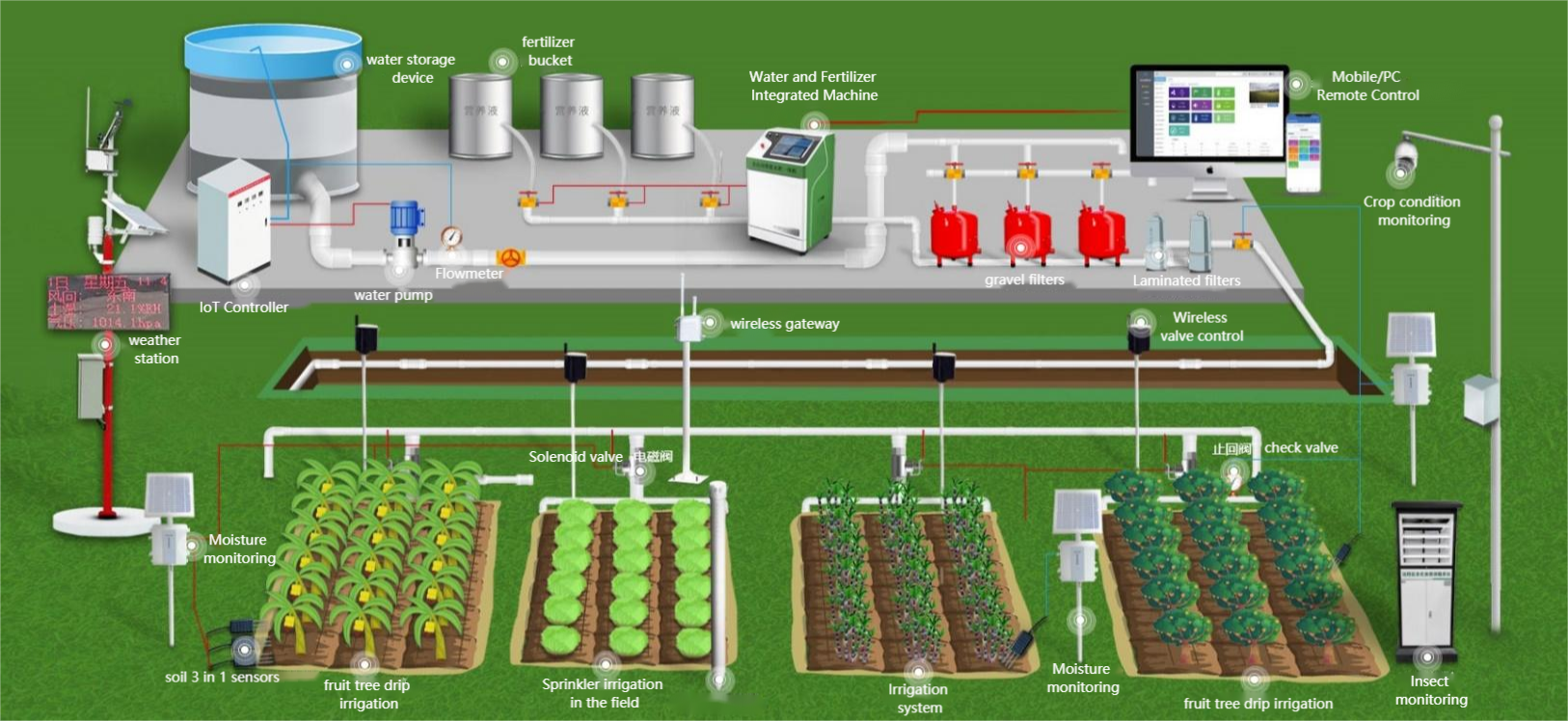
- Principle: Soil moisture is determined by measuring the change in the dielectric constant of the soil. The dielectric constant of water is much larger than that of dry soil, so the capacitance value of the sensor increases as the water in the soil increases.
- Characteristics: high sensitivity, fast response speed, wide measuring range and strong adaptability.
- Scenario: Widely used in a variety of automatic irrigation systems, especially suitable for the need for cost-effective occasions.
- Principle: Utilizes the change in conductivity of the soil to measure the moisture content. When the moisture in the soil increases, the resistance value of the soil decreases.
- Characteristics: Simple structure, low price, easy to maintain, but more sensitive to soil type and salt content.
- Scenario: Suitable for small gardening projects with limited budget.
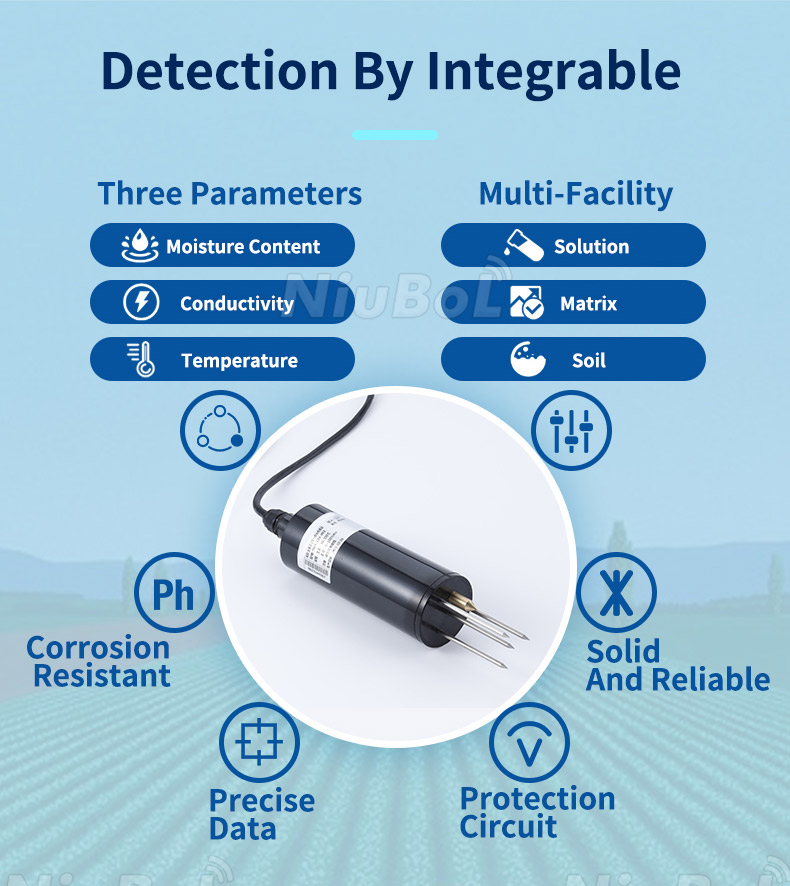
- Principle: Moisture content is determined by measuring the propagation time of electromagnetic waves through the soil. The propagation speed of the electromagnetic wave is affected by the soil moisture.
- Characteristics: High measurement accuracy, insensitive to soil texture and type, but more expensive and requires specialized calibration and maintenance.
- Applicable scenarios: suitable for agricultural production scenarios with strict requirements on measurement accuracy or high adaptability to soil texture and type.
- Principle: Utilizes the frequency response of electromagnetic waves in the soil to measure the dielectric constant and thus calculate the soil moisture content.
- Characteristics: Relatively low cost, fast measurement speed, flexible probe shape, suitable for simultaneous measurement at multiple depths.
- Scenarios: Suitable for most automatic irrigation systems, especially for applications requiring fast measurements and multi-depth monitoring.
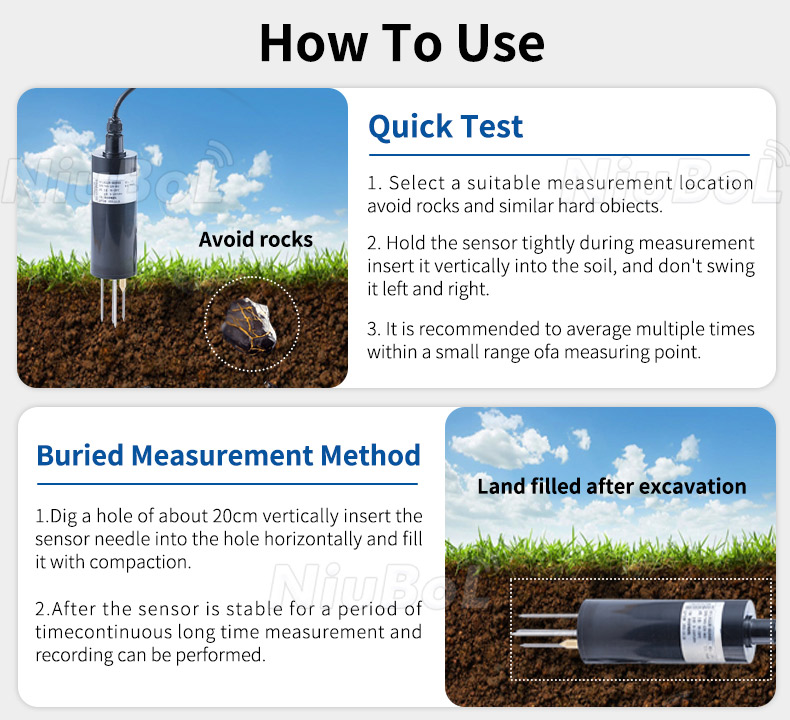
1. accuracy: different sensors have different measurement accuracy, the selection should be based on specific needs.
2. Stability and durability: agricultural production environment is complex and changing, the sensor needs to have good stability and durability.
3. maintenance costs: some sensors may require periodic calibration or replacement parts, which can increase operating costs. 4. system integration: the choice of sensor should be based on specific needs.
4. System integration: When choosing a sensor, you also need to consider its compatibility with other irrigation system components and how easy it is to integrate.
5. Budget: Prices vary greatly from sensor to sensor and the overall budget of the system should be taken into account when selecting a sensor.

Assume that in a modern agricultural park, an automatic irrigation system needs to be installed to manage the irrigation needs of multiple greenhouses and fields. The specific steps are as follows:
- Select representative locations in each greenhouse and field to install capacitive soil moisture sensors and temperature sensors.
- Rainfall sensors and weather sensors were installed at the park entrances.
- Sensors transmit data to the central control unit via wireless network (e.g. 4G/5G).
- The central control unit processes the received data and sets soil moisture thresholds (e.g., irrigation starts when soil moisture is below 30%).
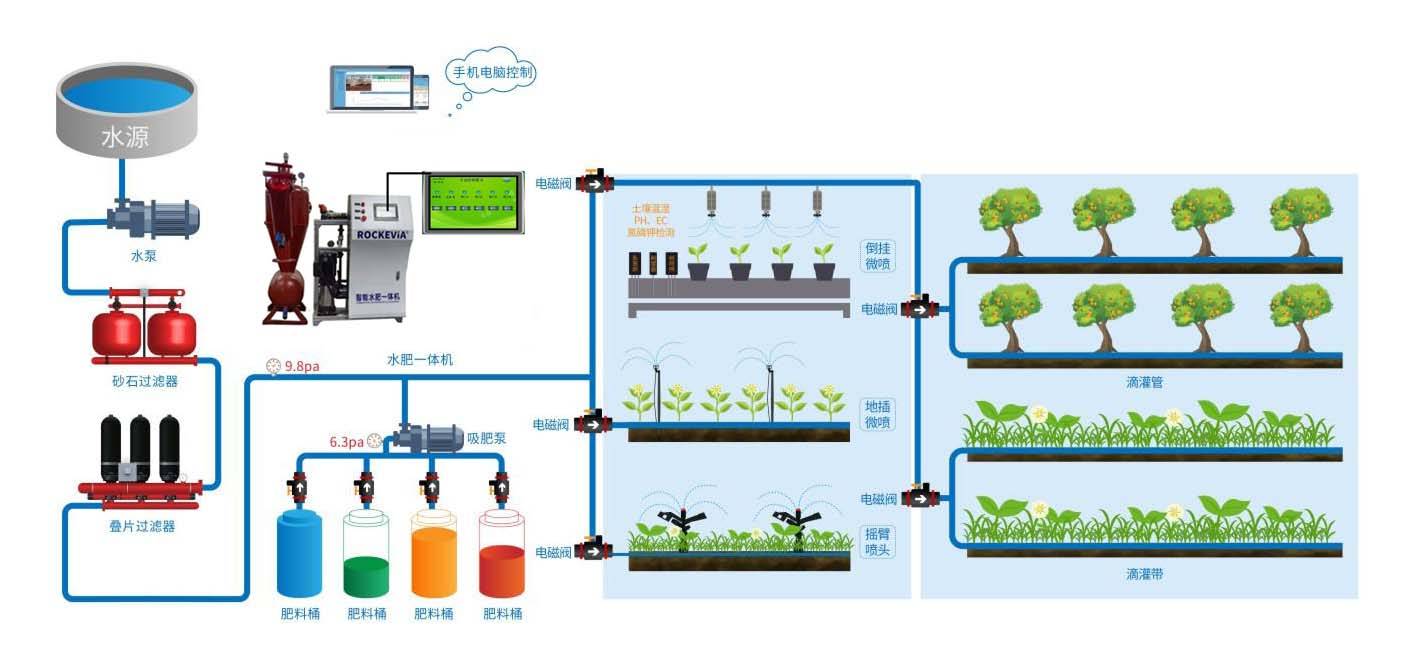
- The control unit combines sensor data and weather forecasts to decide whether irrigation is needed and how much.
- When the soil moisture is below the set threshold, the control unit sends a start signal to the irrigation equipment to open the valve and start the pump.
- The system adjusts the irrigation time and flow rate based on real-time feedback from the sensors to ensure that the right amount of water is applied to the soil.
- Once the soil moisture reaches the preset upper threshold or the irrigation time reaches the preset value, the system will automatically turn off the irrigation equipment.
- The system records the date, time, duration and water consumption of each irrigation.
- By analyzing these data, the irrigation strategy can be optimized to achieve more efficient and save water.
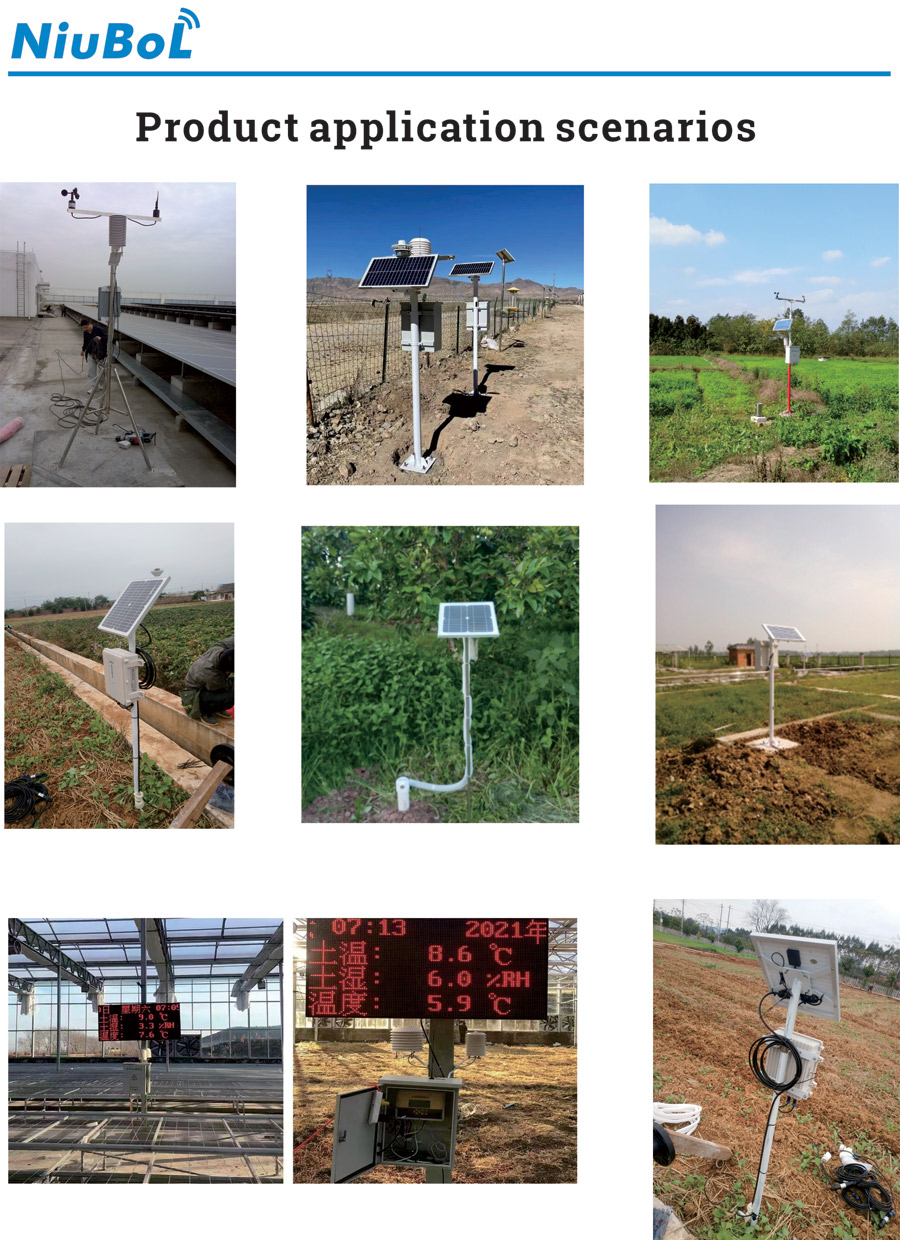
Summary
By integrating multiple sensors and advanced control technologies, an automated irrigation system can realize precise monitoring and automatic control of the irrigation process. Such systems not only improve irrigation efficiency and reduce water waste, but also enhance crop yield and quality. Efficient and intelligent irrigation management can be realized by choosing the right sensors and system components and combining them with specific agricultural production needs.
1.NBL-S-THR Soil Temperature Moisture Sensor datasheet
NBL-S-THR-Soil-temperature-and-moisture-sensors-Instruction-Manual-V4.0.pdf
2. NBL-S-TMC Soil Temperature Moisture EC Sensor datasheet
NBL-S-TMC-Soil-temperature-and-moisture-conductivity-sensor.pdf
3. NBL-S-TM Soil Temperature Moisture Sensor datasheet
NBL-S-TM-Soil-temperature-and-moisture-sensor-Instruction-Manual-4.0.pdf
4. NBL-S-TMCS Soil Temperature, Moisture, Conductivity and Salinity Integrated Sensor
NBL-S-TMCS-Soil-Temperature-Humidity-Conductivity-and-Salinity-Sensor.pdf
Prev:What sensors are used in smart irrigation system?
Next:How do you measure soil moisture for irrigation water management?
Related recommendations
Sensors & Weather Stations Catalog
Agriculture Sensors and Weather Stations Catalog-NiuBoL.pdf
Weather Stations Catalog-NiuBoL.pdf
Related products
 Combined air temperature and relative humidity sensor
Combined air temperature and relative humidity sensor Soil Moisture Temperature sensor for irrigation
Soil Moisture Temperature sensor for irrigation Soil pH sensor RS485 soil Testing instrument soil ph meter for agriculture
Soil pH sensor RS485 soil Testing instrument soil ph meter for agriculture Wind Speed sensor Output Modbus/RS485/Analog/0-5V/4-20mA
Wind Speed sensor Output Modbus/RS485/Analog/0-5V/4-20mA Tipping bucket rain gauge for weather monitoring auto rainfall sensor RS485/Outdoor/stainless steel
Tipping bucket rain gauge for weather monitoring auto rainfall sensor RS485/Outdoor/stainless steel Pyranometer Solar Radiation Sensor 4-20mA/RS485
Pyranometer Solar Radiation Sensor 4-20mA/RS485
Screenshot, WhatsApp to identify the QR code
WhatsApp number:+8615367865107
(Click on WhatsApp to copy and add friends)
